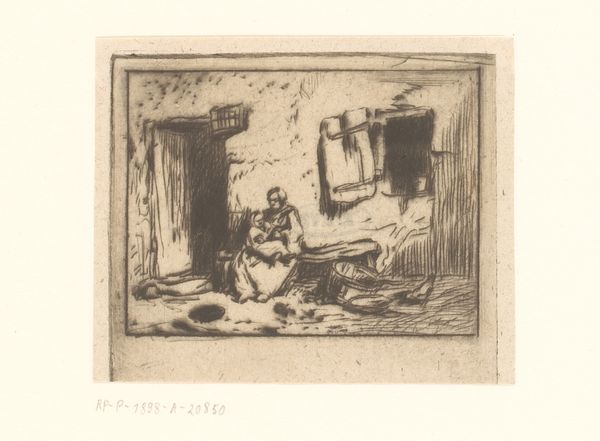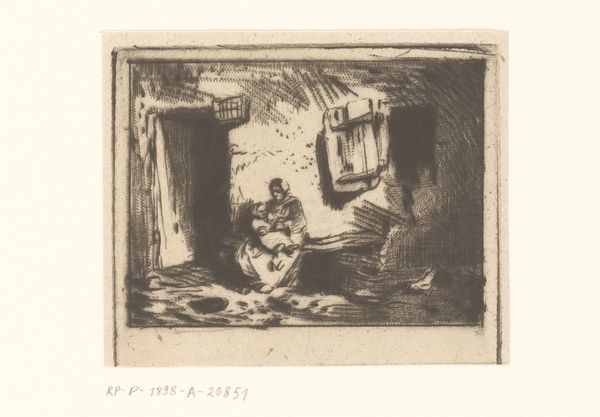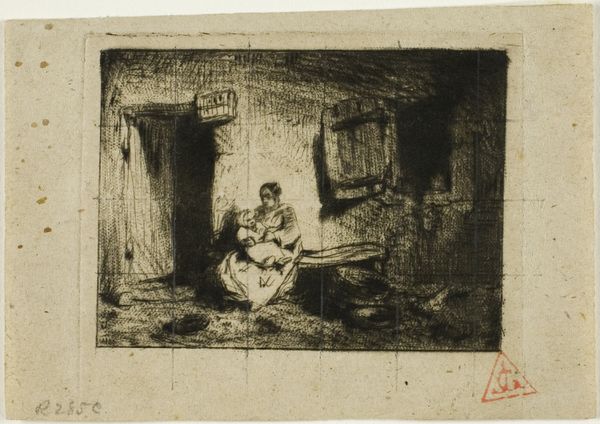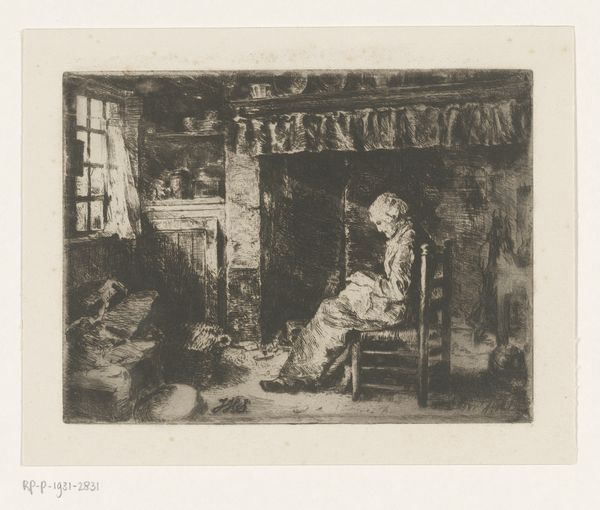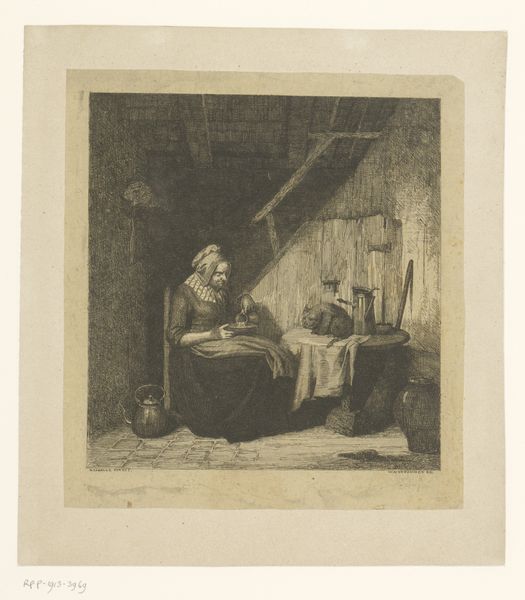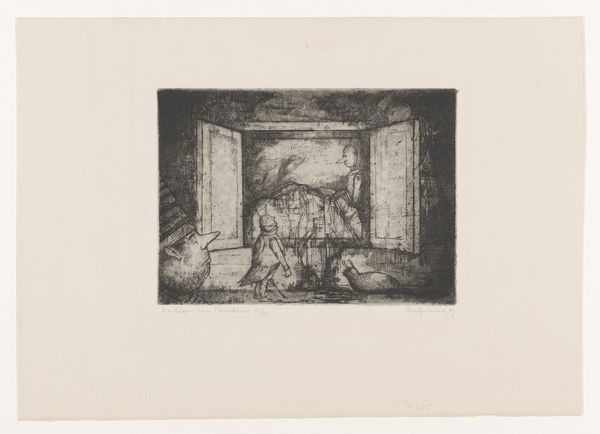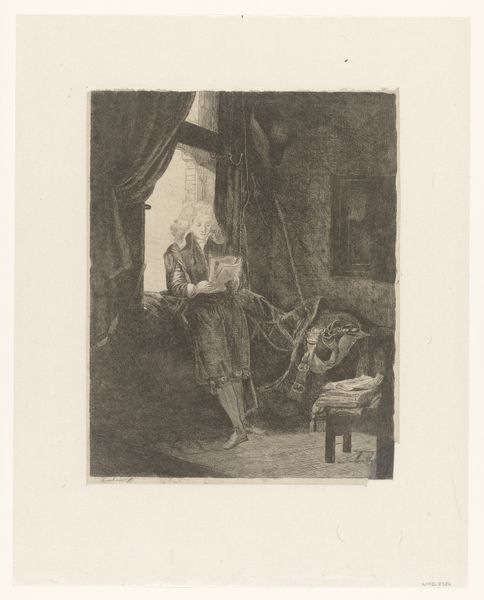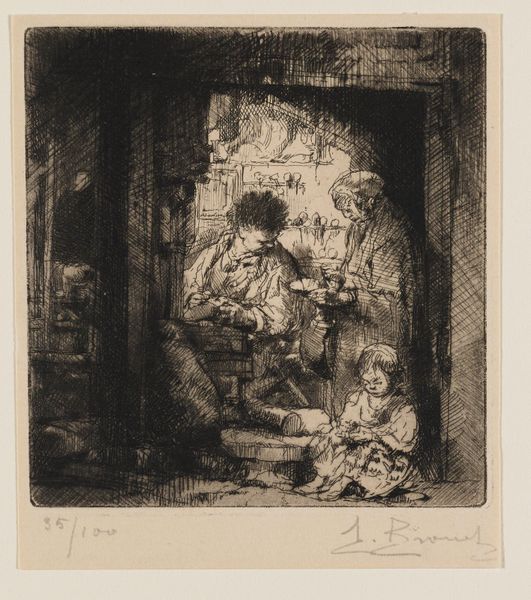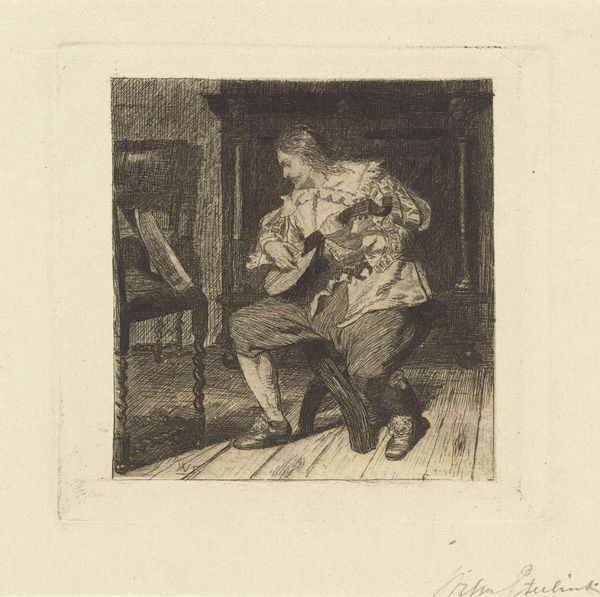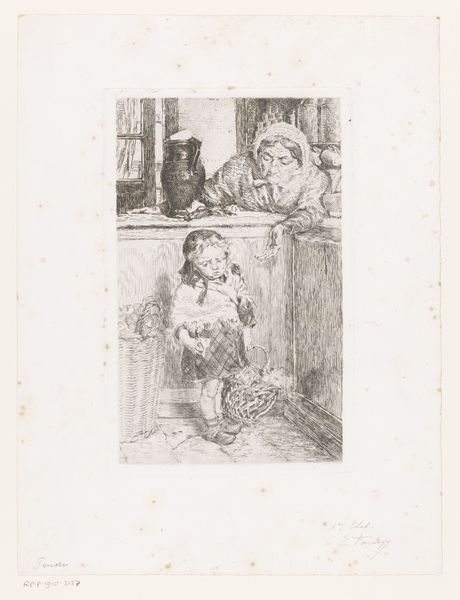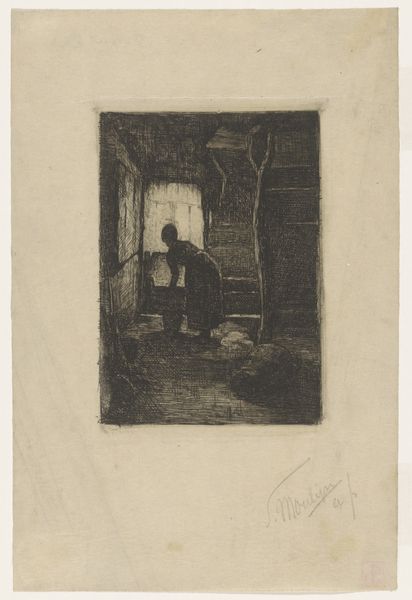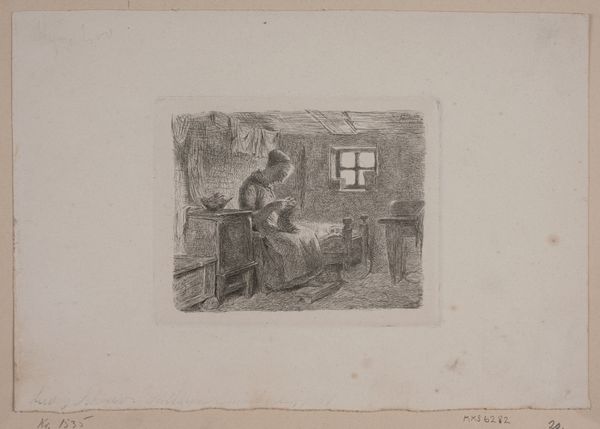
drawing, print, etching, paper
#
portrait
#
pencil drawn
#
drawing
#
mother
# print
#
etching
#
paper
#
pencil drawing
#
genre-painting
Dimensions: height 66 mm, width 79 mm
Copyright: Rijks Museum: Open Domain
Editor: Here we have Charles Jacque's "Vrouw met kind op een bank tegen een gevel", an etching on paper from 1843. It's quite a small work, and the intimacy of the mother and child is so apparent even though the details are somewhat obscured by the etching style. What stands out to you about this image? Curator: It’s fascinating to consider this image within the context of 19th-century French society. Genre scenes like these, depicting everyday life, were becoming increasingly popular, offering a glimpse into the lives of the working class. How does the setting, specifically the rough facade behind the mother and child, inform your understanding? Editor: It definitely makes me think about the hardships of the time, suggesting maybe a life of poverty or simply a more rustic existence. The backdrop contrasts so starkly with the tenderness between them. It gives the image more depth, wouldn't you say? Curator: Absolutely. Artists like Jacque played a crucial role in shaping the visual narrative around family and social classes. The institutional support, or lack thereof, also dictated who could create and circulate such imagery. Were these images intended to be sympathetic portrayals, or something else entirely? Editor: I think maybe it depends on the viewer. It could be either, right? A well-to-do person might look at this and feel sympathy, while someone of the same social class might see it as just everyday life. Curator: Exactly! The power of art resides in its ability to evoke diverse responses, reflecting societal biases and ingrained expectations. Looking back, we see how the proliferation and presentation of similar imagery has shaped social consciousness about mothers, children, and class. What do you take away from that, thinking about today’s image landscape? Editor: It's definitely made me more aware of how the media frames our perception of these groups, even today. Curator: Precisely! And understanding the historical precedents allows us to critically assess the images we consume daily.
Comments
No comments
Be the first to comment and join the conversation on the ultimate creative platform.
